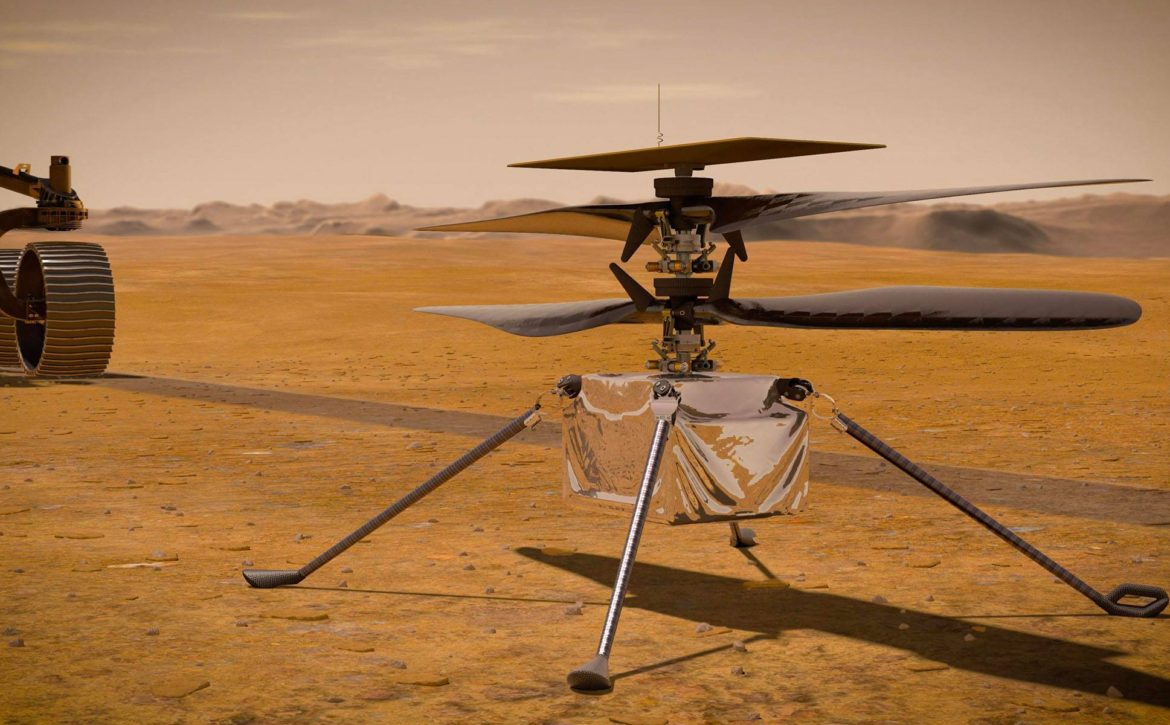
A piece of the Wright brothers’ first plane is now on Mars
NASA’s Perseverance rover is stealing most of the headlines related to the Mars 2020 mission, but it’s not the only new arrival on the Red Planet. The Mars helicopter Ingenuity came along for the ride, and while it doesn’t have any scientific objectives, NASA still hopes it will provide them with information related to powered flight on the dusty planet. It’s an exciting experiment that could shape future missions, but it’s been hiding a secret.
We all know how much NASA loves to include little surprises and extra touches on its various vehicles, and Ingenuity is no different. The tiny helicopter — which, if all goes according to plan, will become the first manmade vehicle to ever achieve powered flight on another planet — is carrying a piece of aviation history with it. A tiny bit of fabric that once graced the wings of the Wright brothers’ plane Flyer is actually taped to the helicopter.
Achieving flight was obviously a very big deal when the brothers accomplished it in 1903. The first-ever flight in a manmade aircraft lasted a mere 12 seconds, but it served as the spark for an entirely new kind of high-speed travel. NASA is hoping that the Ingenuity helicopter will achieve something similar with its first powered flights on Mars, and it’s possible that it, too, could lead to new advancements for future missions to Mars and beyond.
NASA offers the following:
A small amount of the material that covered one of the wings of the Wright brothers’ aircraft, known as the Flyer, during the first flight is now aboard Ingenuity. An insulative tape was used to wrap the small swatch of fabric around a cable located underneath the helicopter’s solar panel. The Wrights used the same type of material – an unbleached muslin called “Pride of the West” – to cover their glider and aircraft wings beginning in 1901. The Apollo 11 crew flew a different piece of the material, along with a small splinter of wood from the Wright Flyer, to the Moon and back during their iconic mission in July 1969.
That’s pretty awesome.
NASA is currently hoping to perform the first flight test on April 8th or soon after. First, it has to be driven to the “airfield” NASA has chosen, and the Perseverance rover recently traveled there. The location is flat and free of large obstacles, making it the perfect place for the helicopter to do its thing.
Once NASA commands the rover to drop the helicopter, the tiny aircraft will have roughly a month to perform test flights before it finally craps out. NASA is hoping that the first powered flight will take the helicopter to a height of around 10 feet where it will hold its position for 30 seconds before descending back to the surface. If all goes well, Perseverance should be able to capture images and video of the event, and we’ll all get to see it in action.
Read More

